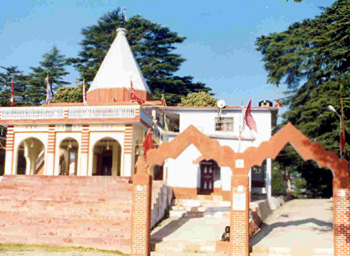 According to the history of Champawat District, it owes its name to the name of the daughter Champawati of King Arjun Deos. History suggests that earlier Champawati District was a part of Almora District. In 1972, Champawat Tehsil of Almora District was transferred to Pithoragarh. On 15th of September, 1997 Champawat District was given an independent identity. It is said that since time immemorial Champawat District has had its own importance in terms of religious and social aspects.
According to the history of Champawat District, it owes its name to the name of the daughter Champawati of King Arjun Deos. History suggests that earlier Champawati District was a part of Almora District. In 1972, Champawat Tehsil of Almora District was transferred to Pithoragarh. On 15th of September, 1997 Champawat District was given an independent identity. It is said that since time immemorial Champawat District has had its own importance in terms of religious and social aspects.
Further, as per the history, it is believed that Champawat District is the source and origin of religion and culture of Uttarakhand. In the ancient time this region was the origin of Naga, Kinnar and Khas Raja`s. The available historical pillars, manuscripts, archeological collection and folk-lore describe the greatness of the area during the period of Mahabharata. Barahi Temple of Devidhura, Tarkeshwar Mandir of Champawat, Vanasur Fort of Vishung, Baleshwar Mandir of Champawat, Sapteshwar Mandir of Sipti and Ghatotkasha temples are believed to be of the great period of Mahabharata. The ample evidence is also available about the Katiyur dynasty and its prosperity in ancient times. There is a belief that king Brahma Deo and King Raja Arjun Deo was having his capital at this region. In around 1790, with the establishment of the Gorkharaj, the Chandra Vansha came to its end. In 1814, the British government forced the Gorkhas to leave the place. In the history of Indian independence the history of the warriors of this region has been written in golden letters for their sacrifices.
The history of Champawat District states that the region, once the capital of the rulers of the Chand dynasty, is famous for its natural beauty and well known temples. A historical spot, Champawat has many well known temples of high artistic value. The Baleshwar temple is the noted attraction of Champawat. The Nagnath temple at Champawat is also an excellent example of ancient architecture of Kumaon. The story of Golla Devta is also associated with Champawat. It was in Champawat that Lord Vishnu is said to have appeared as `Kurma Avatar`. This hill is also known as Mount Kandev and there is also a small ancient fort located at Champawat.






